Jason Jinks reflects on his time in the Australian Defence Force
He has seen the horror of war but this veteran has no regrets about his 16 years with the Australian Army.
Tasmania
Don't miss out on the headlines from Tasmania. Followed categories will be added to My News.
He has seen the horror of war but Jason Jinks has no regrets about his 16 years with the Australian Army.
The Iraq War veteran usually goes to the dawn service on Anzac Day and has at times marched in the parade.
“For me it’s about commemorating and honouring the service of those who went before us and either catching up with, or thinking about all the guys and girls I did serve with,” Mr Jinks said.
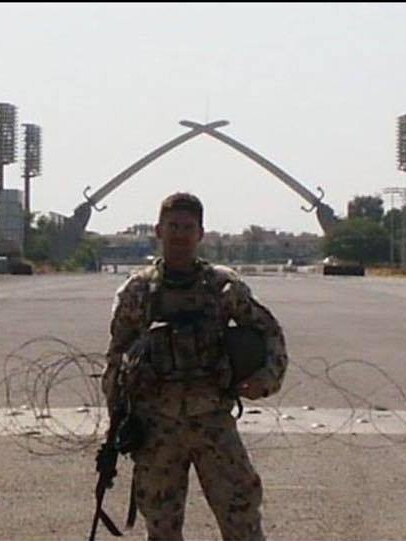
“We’ve lost certain people and of course you miss them, but it’s actually a day where I think of the good times.
“It wasn’t just about giving to the country – it was a sense of purpose, a sense of pride with my mates.
“It’s about the commitment to the bloke beside you, in your unit, doing all that.”
Mr Jinks, 49, who moved from Victoria to the Huon Valley in 2020, joined the army in 1991 and had active service in Iraq in 2004 and peacekeeping in Bougainville in 2000.
He is on a TPI pension because of his injuries.
For four months he was deployed to Iraq as part of the security detachment for the Australian Embassy and was haunted by the death of a young boy after a bombing.
“He’d been selling soft drink bottles on the corner opposite our building every day.
“They tried to blow us up at certain times and when there was a car bomb, a VBIED incident, and the young child was killed, the locals actually put a lot of blame on us.
“Even though we had nothing to do with it, they blamed us because we were there.”
After that deployment he decided to leave the army because he didn’t like some of the decisions being made, but later returned for four years in the Reserves.
For 10 years he blocked the boy’s death from his mind.
“And then it sort of crept its way into the forefront of my consciousness and that’s when, with the encouragement of my wife, I started counselling and I would encourage anyone that does have any issues that they think are going to affect their lives to seek out the support that is available.”
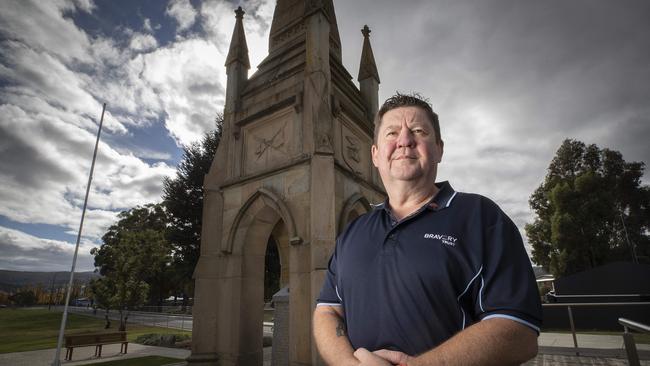
“I’m in a brilliant spot now.”
Mr Jinks also sought financial help from the Bravery Trust which marks its 10-year anniversary this year and has provided financial support for more than 6000 veterans and their families.
“I was going through a bit of a difficult patch, I was sort of in a dark space and we had a couple of big bills and other financial things pop up and a friend recommended Bravery Trust.
“It’s always hard to put your hand up and say, ‘I need help and I really didn’t want to do it but their empathy was so real.”
Mr Jinks decided to give back to the Trust and volunteered a day a week in administration and revamped the application process.
With his bad back and mental health issues he decided to take up archery and in 2017 competed for Australia in the Invictus Games in Canada.
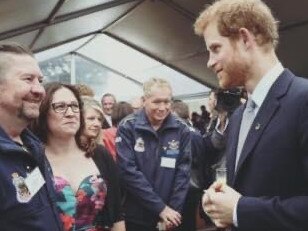
He was “devastated” when he didn’t go as well as he had hoped.
“I was honoured to be able to represent my country again,: he said.
“When you’ve been to some bad places where you’ve got no confidence in your body or your health to actually have someone empower you to say, ‘no, you are good enough’ was worth it.”
Behind the untold story of a HMAS Hobart war hero
The heart-wrenching story of a HMAS Hobart war hero has been immortalised in print by his nephew and great-niece.
John Thorn and his daughter Tara Anderson have written a book about Alban Charles Sampson Smith who, as a 16-year-old, faked his age in order to fight for his country in WWII.
Mr Smith, better known as Sam, courageously served as an Able Seaman until he was killed at the age of 32 when his ship was torpedoed by Japanese forces.
Mr Smith’s memories were pieced together from his meticulously kept diary which describe his day to day life aboard the HMAS Hobart.
Dr Thorn said the diary excerpts showed a young man with an extraordinarily good sense of humour despite staring down death on a regular basis.
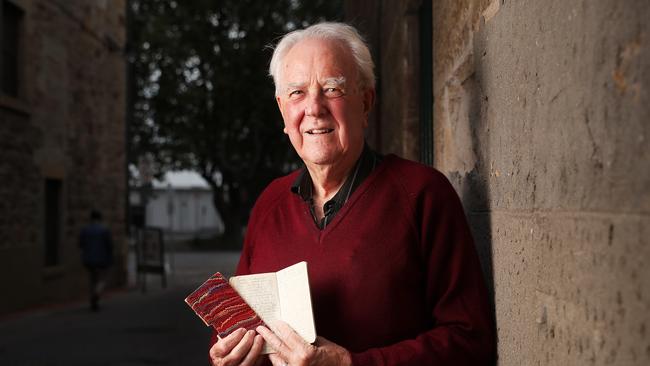
“Oh well, you only die once,” was one of the diary entries written after the ship narrowly avoid being bombed again.
One the other sailors remarked that the captain steered the ship like a Maserati, somehow always managing to avoid the hail of bombs and shrapnel raining down from the skies.
The crew often went without food for long stretches at a time, but still ended up sharing their supplies with survivors they’d rescued from the sea.
“They’d have 1000 people on the deck of the ship and the sailors would share their food with the people they’d rescued,” Dr Thorne said.
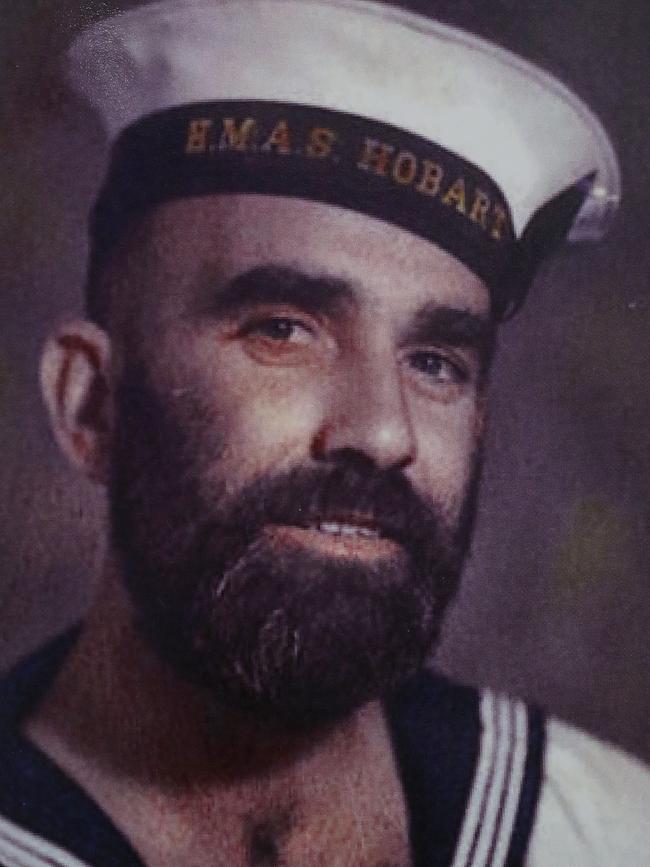
“It’s very impressive. These are things we don’t understand, what a warship does. They did very ordinary things and they helped ordinary people.”
Even with the horrors of war raging around them the crew found time for ordinary activities, including cricket, sunbathing, reading books, and finding what joy they could out of life.
During the course of writing the book Dr Thorn met with 100-year-old Derek Holyoake, a fellow sailor aboard the HMAS Hobart.
Despite his age Mr Holyoake still has fond memories of Mr Smith, who he remembers as the young bookie who would run the Melbourne Cup for the rest of the crew.
While reading through the initial draft Mr Holyoake said it was a “bloody good show” that brought back many memories from his youth.
Dr Thorn said he had his own fond memories of his uncle from when he was a six-year-old boy.

“Since I was six I’ve known about these diaries. My grandfather would go out to work and I would sneak into his bedroom and I’d get them out of the drawers and read them,” he said.
“We want to share the story because we think it’s a story worth sharing. That was the impetus for us.”
Back then Dr Thorn saw Mr Smith as a towering military man, even though in reality he was a remarkably short man.
His short stature inspired the title of his book “The Long and the Short of It”, which is currently being sold at Fullers Bookshop and archived at the Australian War Memorial.
‘Extremely happy’: Former ‘Unknown Soldier’ gets fitting send off
IT’S taken more than 100 years, but a Tasmanian soldier killed in action after attacking German machine gun posts finally has his own marked grave.
The family of Private Leslie Styles, of Ringarooma, a member of the 40th Battalion, Australian Imperial Force, has paid tribute to the War Graves Commission, for its efforts in putting him to rest at Heath Cemetery at Harbonnieres, France.
Private Styles enlisted in March 1916 and was killed in action during the Battle of Amiens on August 1918, after he and three other soldiers successfully took two German machine gun posts.
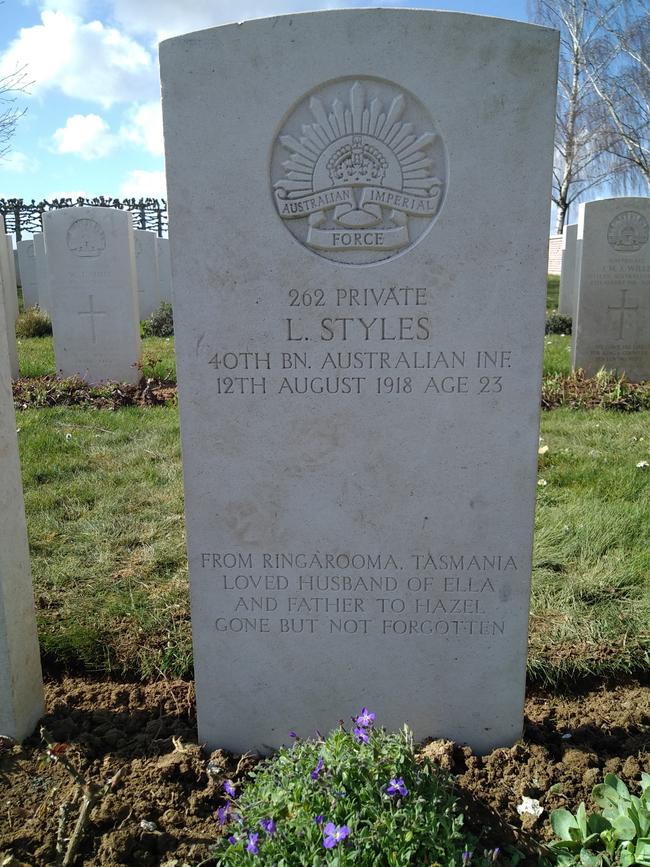
He was buried as an Unknown Soldier
Tony Styles, of Margate and father Neville, of Kingston, whose great-grandfather’s was Leslie’s younger brother, were delighted when Defence Personnel and Veterans’ Affairs Minister Darren Chester finally confirmed his resting place last Anzac Day.
“The family are extremely happy Leslie now has a beautiful headstone to mark his grave and people visiting the cemetery can remember him and thank him for his service to the country and understand he was a young man from Ringarooma in Tasmania with a family including wife and daughter who will never forget him,” Tony said.
“Our family think it is wonderful that Leslie will now be remembered by everybody who visits the cemetery in France and our family will always remember Leslie and his sacrifice for our country as I have created a memory box with his medals and story in his honour which we will pass down to our children and grandchildren in the future.”

Tony said if he had the opportunity he would love to visit Private Styles’ grave and he hoped it gave hope to others whose loved ones had been killed at war.
“The Fallen Diggers Incorporated group are doing their very best to continue to identify unmarked war graves of Australian soldiers,” he said.
During his research Tony found a poignant handwritten letter from Leslie’s widow, Ella Styles to the Army’s medals section in July 1961 asking for his medals to be replaced.
“Sadly Ella, who died in 1968 never did get his medals, but through my friend Kerri Statton and David Newell from the Coin and Stamp place in Hobart we were able to get a set of replica medals to honour Leslie’s service, which we then have had engraved with Leslie’s name and service number,” he said.
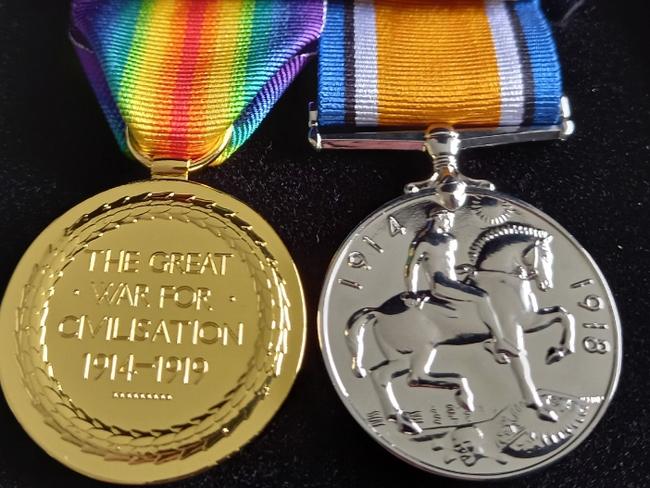
“Our family are extremely grateful to Fallen Diggers Incorporated, a public interest group who identified where Leslie’s grave was and to Catherine and David from the Commonwealth War Graves Commission in England who arranged for Leslie’s headstone to be created and placed on his grave.”


